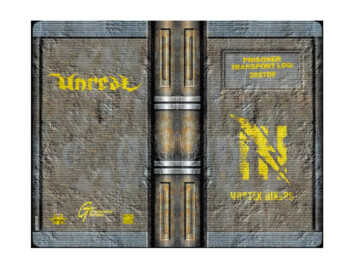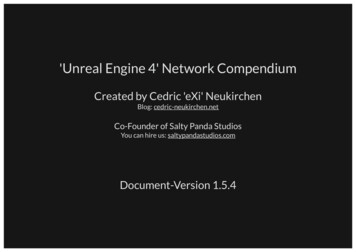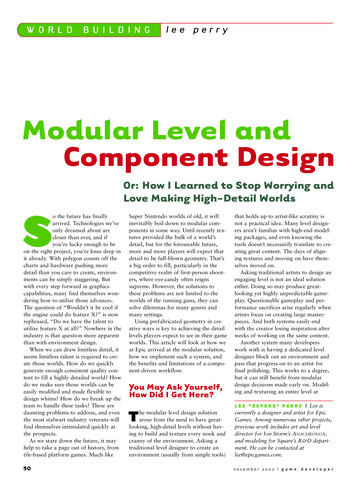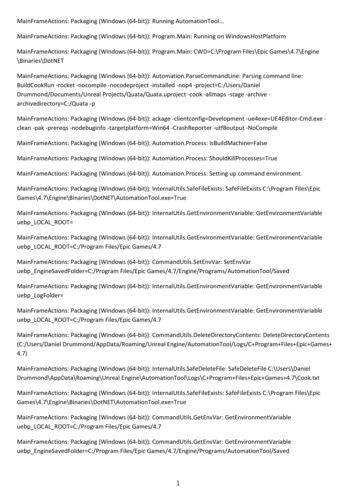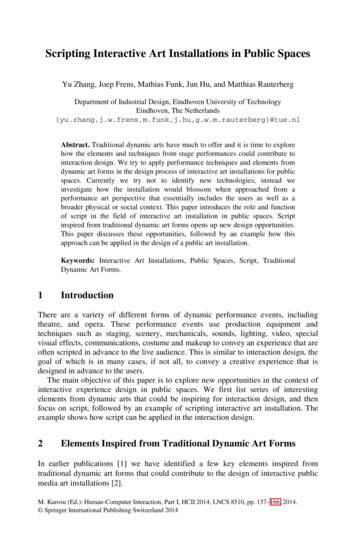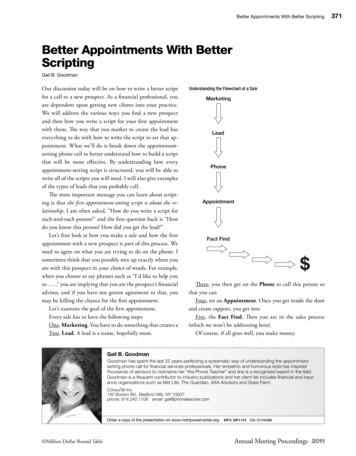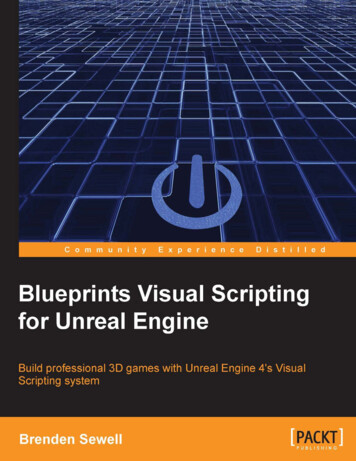
Transcription
Blueprints Visual Scriptingfor Unreal EngineBuild professional 3D games with Unreal Engine 4'sVisual Scripting systemBrenden SewellBIRMINGHAM - MUMBAI
Blueprints Visual Scripting for Unreal EngineCopyright 2015 Packt PublishingAll rights reserved. No part of this book may be reproduced, stored in a retrievalsystem, or transmitted in any form or by any means, without the prior writtenpermission of the publisher, except in the case of brief quotations embedded incritical articles or reviews.Every effort has been made in the preparation of this book to ensure the accuracyof the information presented. However, the information contained in this book issold without warranty, either express or implied. Neither the author, nor PacktPublishing, and its dealers and distributors will be held liable for any damagescaused or alleged to be caused directly or indirectly by this book.Packt Publishing has endeavored to provide trademark information about all of thecompanies and products mentioned in this book by the appropriate use of capitals.However, Packt Publishing cannot guarantee the accuracy of this information.First published: July 2015Production reference: 1210715Published by Packt Publishing Ltd.Livery Place35 Livery StreetBirmingham B3 2PB, UK.ISBN 978-1-78528-601-8www.packtpub.com
CreditsAuthorBrenden SewellCopy EditorsHiral BhatVikrant PhadkeReviewersFaris AnsariProject CoordinatorScott HafnerNeha BhatnagarMarcin KamińskiAlankar PradhanMatt SutherlinCommissioning EditorNeil AlexanderAcquisition EditorVivek AnantharamanContent Development EditorDivij KotianTechnical EditorAnushree Arun TendulkarProofreaderSafis EditingIndexerRekha NairProduction CoordinatorAparna BhagatCover WorkAparna Bhagat
About the AuthorBrenden Sewell is a lead game designer at E-Line Media, and has spent the last 5years designing and creating games that are both fun to play and have educational orsocial impact. He has been building games since 2002, when Neverwinter Nights taughthim an invaluable lesson about the expressive power of game design. In 2010, hegraduated with a degree in cognitive science from Indiana University. Since then, hehas focused on enhancing his own craft of game design while harnessing its power todo good in the world, and exposing more people to the joy the profession holds.I would like to thank the following people for contributing to thisbook and making it a reality: Steve Swink (@steveswink), JakeMartin, Demetrius Comes, and Graeme Bayless for providing me theright mentorship to elevate me in my design practice; Logan Barnett(@logan barnett) and David Koontz (@dkoontz) for pushing myknowledge of scripting to become a more versatile developer; thePackt Publishing staff and my technical reviewers for helping meto make this book a reality; the Unreal development communityfor being supportive and informative as we all endeavor to masterthis technology together; and my supremely supportive girlfriendMichelle, my parents who made this all possible, and all of myincredible friends for enriching my life.
About the ReviewersFaris Ansari is an IT professional from Pakistan, who has skills and interest inUnity 3D, Unreal Engine, Cocos2d, the Allegro library, OpenGL, and other gamedevelopment environments. He started his career as a game developer and workedon successful games that generated huge revenues. He also possesses the skillsrequired for, and takes on new challenges while, working on new technologies,especially open source technologies.Faris has reviewed the book Learning NGUI for Unity.His hobbies consist of playing games, learning new things, and watching movies.He is very interested in working with fellow coworkers and friends on innovativeideas. His favorite saying is, "Every professional was once a beginner."Feel free to contact him and discuss something innovative. He can be reached onLinkedIn at https://www.linkedin.com/in/farisansari.I would like to thank my friends and family for their continuoussupport and help.Scott Hafner is a professional game designer with over 10 years of experience inthe video game industry. Over the course of his career, he has worked as a producer,game designer, and level designer on a range of platforms and genres, includingMMOs, third-person shooters, and RPGs.I would like to thank my fianceé for her continued encouragementand support in all that I do!
Marcin Kamiński is working for CTAdventure as a senior programmer andhas his own company, Digital Hussars. Previously, he worked for Artifex Mundi,CI Game, and Vivid Games. His main fields of expertise are artificial intelligenceand network programming. For 14 years, he has helped develop great gamesfor PCs, consoles, and mobiles.Marcin was also a reviewer of the books Unity iOS Essentials and Unity 2D GameDevelopment Cookbook.Alankar Pradhan hails from Mumbai, Maharashtra. He did his schooling fromI.E.S.'s CPV High School. He is an ambitious person who loves interacting withnew people, dancing, kickboxing, traveling, spending leisure time with friends, andplaying games on PCs and mobiles. Games have always been a passion in his life.More than just playing games, how things worked was his main curiosity. Hence, hedecided to pursue his career in this. Alankar completed his BSc honors in softwaredevelopment from Sheffield Hallam University, UK. He has done his master'sin video game programming and management (video game director; BAC 5equivalent) from DSK Supinfogame, where he undertook industry-oriented projectsto increase his skill sets and gave his best to do so. Alankar worked as a gameprogramming intern at Walt Disney, India. During his internship, he was workingon a live project called Hitout Heroes. His name was added to the credits due to hisnoticeable work accomplished. He also interned as a game programmer with DSKGreen Ice Games, and then went on to work as a video game programmer on a gametargeted at PCs and consoles. This game, Death God University (D.G.U), was releasedon July 1, 2015. Another project he is working on is The Forsaken Mountains.Alankar has worked on many small projects in teams as well as individually tosharpen his own skills in various languages, such as C#, C , Java, Unreal scripting,Python, Lua, Groovy/Grails, HTML5/CSS and so on. He is familiar with enginessuch as Unity3D, Unreal Development Kit, and Visual Studio and SDKs such asNetBeans, Eclipse, and Wintermute. In 2013, his dissertation work on Comparisonbetween Python and Lua in Gaming Industry got published as a book. He has workedwith Packt Publishing previously as a technical reviewer of Creating E-LearningGames With Unity and Learning Unreal Engine iOS Game Development.Other than this, Alankar likes to read, listen to music, and write poems and shortstories at times. He has his own website at http://alan.poetrycraze.com, wherehe posts his poems. He has also published a book, The Art Of Lost Words, which isavailable on Amazon.com.
His e-mail ID is alankar.pradhan@gmail.com. You can visit his portfolio siteat alankarpradhan.wix.com/my-portfolio or contact him on Facebook atwww.facebook.com/alankar.pradhan.We are so often caught up in our aim that we forget to appreciatethe journey, especially the people we meet on the way. Appreciationis a wonderful feeling, and it's way better if we don't overlook it.I hereby like to take this opportunity to acknowledge the peoplewho directed me and inspired me in this initiative.I would like to express my sincere thanks to my parents, who alwaysinstilled and believed in me. I am also thankful to my friends fortheir constant support and encouraging words that helped mereach this level.Last but not least, I would like to thank all the people who aredirectly or indirectly involved in this book and helped me insome way or another.Matt Sutherlin has been working in the games industry over the lastdecade, where he's served roles ranging from a QA and scripter to an engineprogrammer and a technical artist. Most recently, he has had a strong focus ongraphics technology, working on engine renderers, art pipelines, and shadersfor AAA titles such as Heroes of the Storm and Halo 5: Guardians.I would like to thank my wife, Megan, and parents, Mike and MaryLynn, for years of support, patience, and understanding; I wouldn'tbe where I am without you. I'd also like to thank Alan Wolfe forbeing an unending stream of cool programming tricks and insightfulalgorithms and for generally being a really great friend.
www.PacktPub.comSupport files, eBooks, discount offers, and moreFor support files and downloads related to your book, please visit www.PacktPub.com.Did you know that Packt offers eBook versions of every book published, with PDFand ePub files available? You can upgrade to the eBook version at www.PacktPub.com and as a print book customer, you are entitled to a discount on the eBook copy.Get in touch with us at service@packtpub.com for more details.At www.PacktPub.com, you can also read a collection of free technical articles, signup for a range of free newsletters and receive exclusive discounts and offers onPackt books and ion/packtlibDo you need instant solutions to your IT questions? PacktLib is Packt's online digitalbook library. Here, you can search, access, and read Packt's entire library of books.Why subscribe? Fully searchable across every book published by Packt Copy and paste, print, and bookmark content On demand and accessible via a web browserFree access for Packt account holdersIf you have an account with Packt at www.PacktPub.com, you can use this to accessPacktLib today and view 9 entirely free books. Simply use your login credentials forimmediate access.
Table of ContentsPrefaceChapter 1: Object Interaction with BlueprintsCreating a project and the first levelSetting a template for a new projectMaking sense of the project settingsCreating the projectAdding objects to our levelExploring materialsCreating materialsMaterial properties and Blueprint nodesAdding substance to our materialCreating our first BlueprintExploring the Event Graph panelDetecting a hitSwapping a materialImproving the BlueprintAdding movementChanging actor mobility and collisionBreaking down our goalStoring data with variablesReadying direction for calculationsGetting relative speed using delta timeTranslating the existing locationUpdating locationChanging directionTesting moving 2325252627
Table of ContentsChapter 2: Enhancing Player Abilities29Chapter 3: Creating Screen UI Elements47Chapter 4: Creating Constraints and Gameplay Objectives63Adding the running functionality by extending a BlueprintBreaking down the Blueprint character movementCustomizing control inputsAdding a sprint abilityAnimating a zoom viewUsing a timeline to smooth transitionsIncreasing the projectile's speedAdding sound and particle effectsGiving our targets state with branchesTriggering sound effects, explosions, and destructionSummaryCreating simple UI meters with UMGDrawing shapes with widget BlueprintsCustomizing the meter's appearanceCreating ammo and enemy countersDisplaying the HUDConnecting UI values to player variablesCreating bindings for health and staminaMaking text bindingsTracking the ammo and eliminated targetsReducing the ammo counterIncreasing the targets eliminated counterSummaryConstraining player actionsDraining stamina while sprintingUsing looping timers to repeat actionsBlocking actions with branchesRegenerating staminaPreventing firing actions when out of ammoCreating collectable objectsSetting up collection logicSetting a gameplay win conditionDisplaying a target goal in the HUDCreating a win menu screenDisplaying the menuTriggering a winSummary[ ii 4676970717272767677798081
Table of ContentsChapter 5: Making Moving Enemies with AISetting up the enemy actor to navigateImporting from the marketplaceExpanding the play areaMaking the level traversable with a NavMeshSetting the stage for intelligence with AI assetsCreating navigation behaviorSetting up patrol pointsEnabling communication between assetsTeaching our AI to walk with the Behavior TreeMaking the AI chase the playerGiving the enemy sight with Pawn SensingAdding conditions to the Behavior TreeCreating chasing ter 6: Upgrading the AI Enemies103Chapter 7: Tracking Game States and ApplyingFinishing Touches129Creating an enemy attackMaking an attack taskUpdating the health meterMaking enemies hear and investigate soundsAdding hearing to the Behavior TreeSetting up the investigating tasksInterpreting and storing the noise event dataAdding noise to the player's actionsMaking the enemies destructibleSaving time by reusing existing Blueprint contentSpawning more enemies during gameplayChoosing a spawn point where enemies will appearManaging spawn rates and limits with variablesSpawning new enemies in the Level BlueprintCreating enemy wandering behaviorIdentifying a wander point with a custom taskAdding wandering to the Behavior TreeSummaryMaking danger real with player deathSetting up a lose screenCreating round-based scaling with saved gamesStoring game information using a SaveGame object[ iii 26128129130133133
Table of ContentsStoring and loading the saved data when starting the gameIncreasing the enemy target goalCreate a transition screen to be shown between roundsTransitioning to a new round when the current round is wonPausing the game and resetting the save fileCreating a pause menuResuming and resetting the save fileTriggering the pause menuSummary134138139141143144145147149Chapter 8: Building and Publishing151Index163Optimizing your graphics settingsSetting up our game to be played by othersPackaging the game into a buildSteps for further learningFinish and share as many games as you canStretch out o
Unity 3D, Unreal Engine, Cocos2d, the Allegro library, OpenGL, and other game development environments. He started his career as a game developer and worked on successful games that generated huge revenues. He also possesses the skills required for, and takes on new challenges while, working on new technologies, especially open source technologies. Faris has reviewed the book
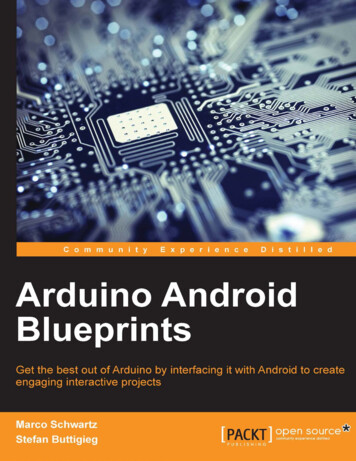
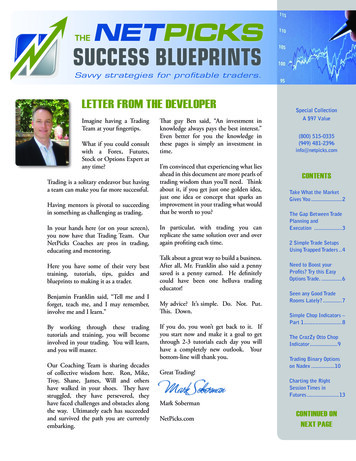

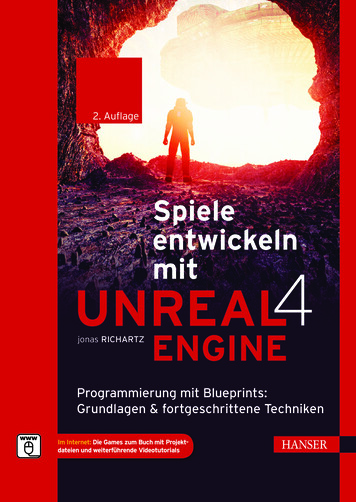
![Unreal Engine 4 Tutorial Blueprint Tutorial [1] Basic .](/img/5/ue4-blueprints-tutorial-2018.jpg)
